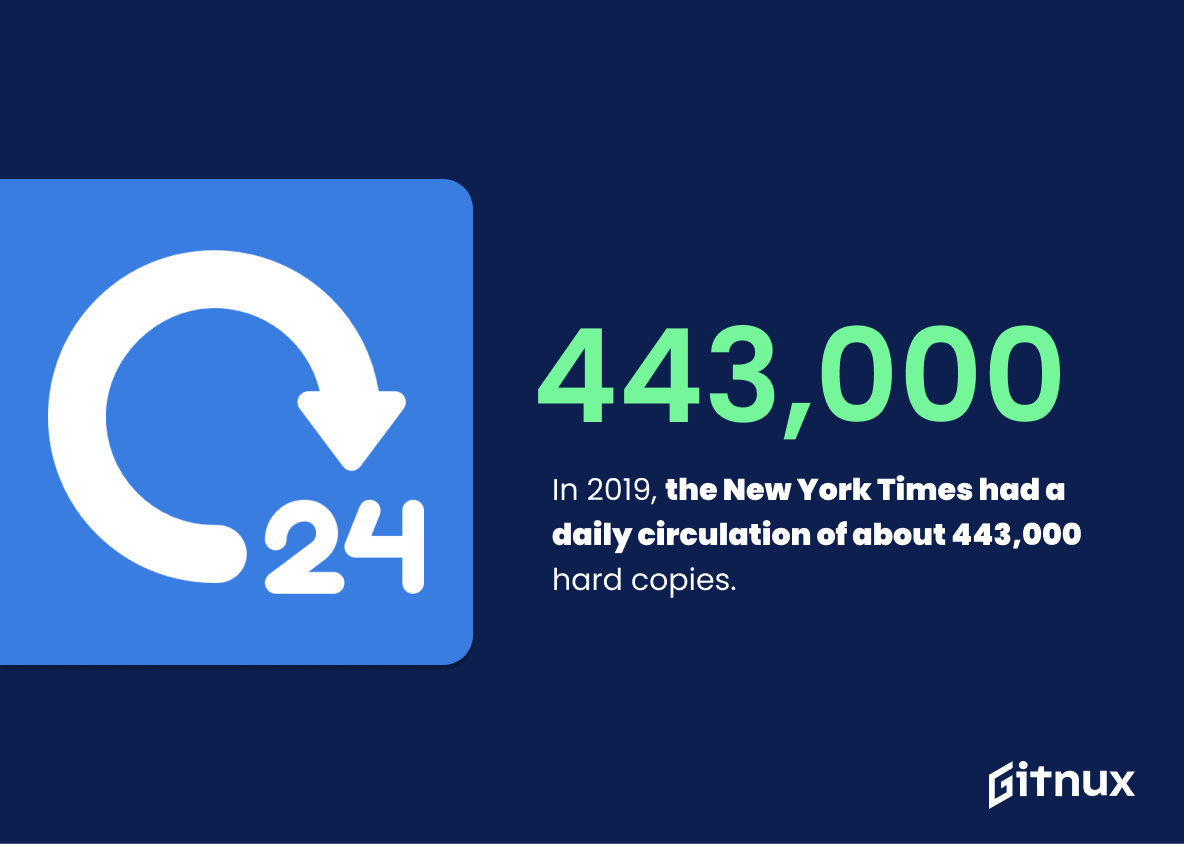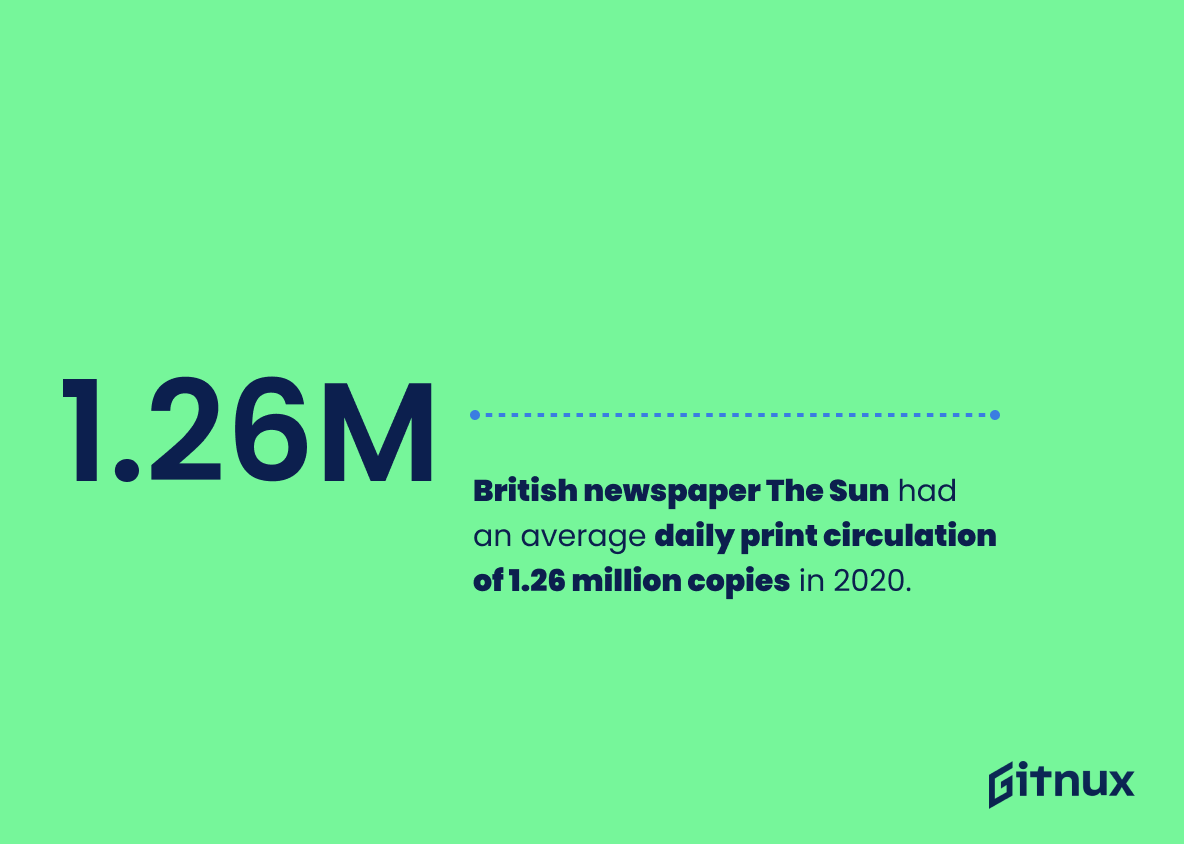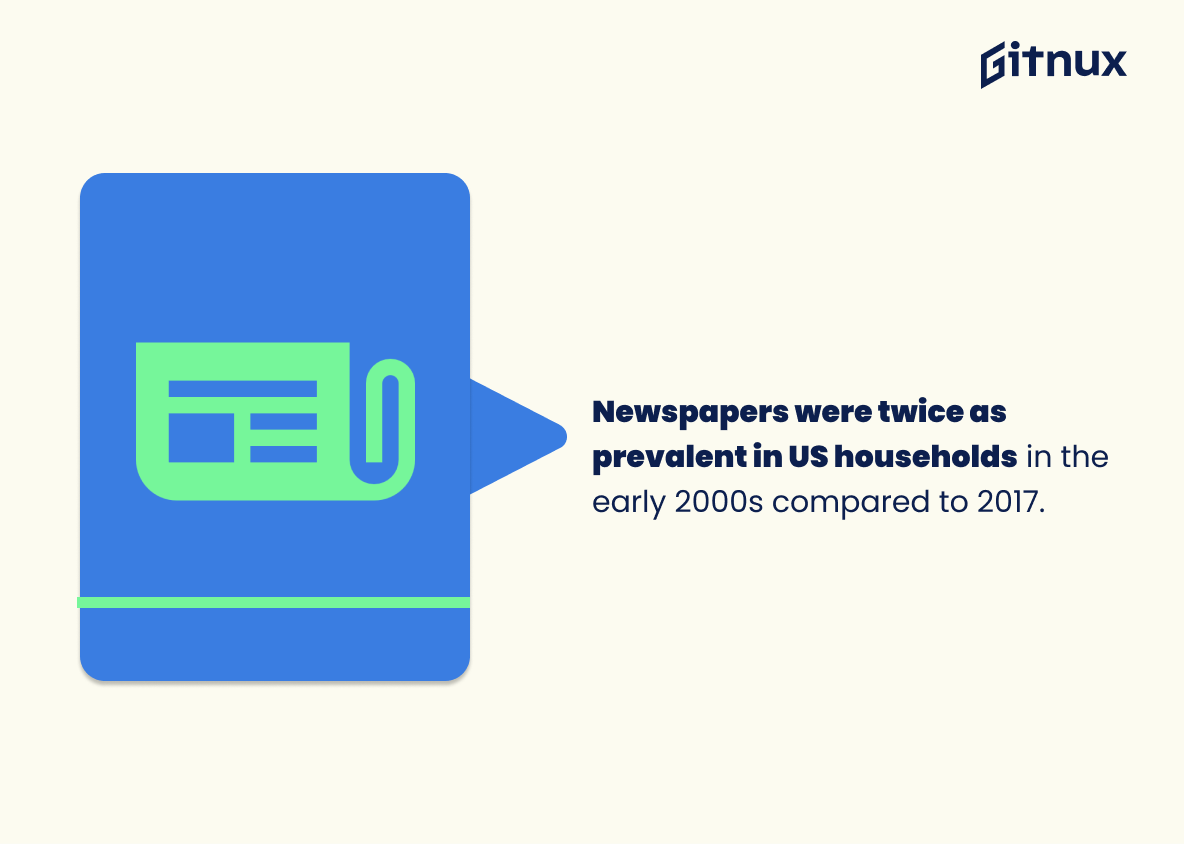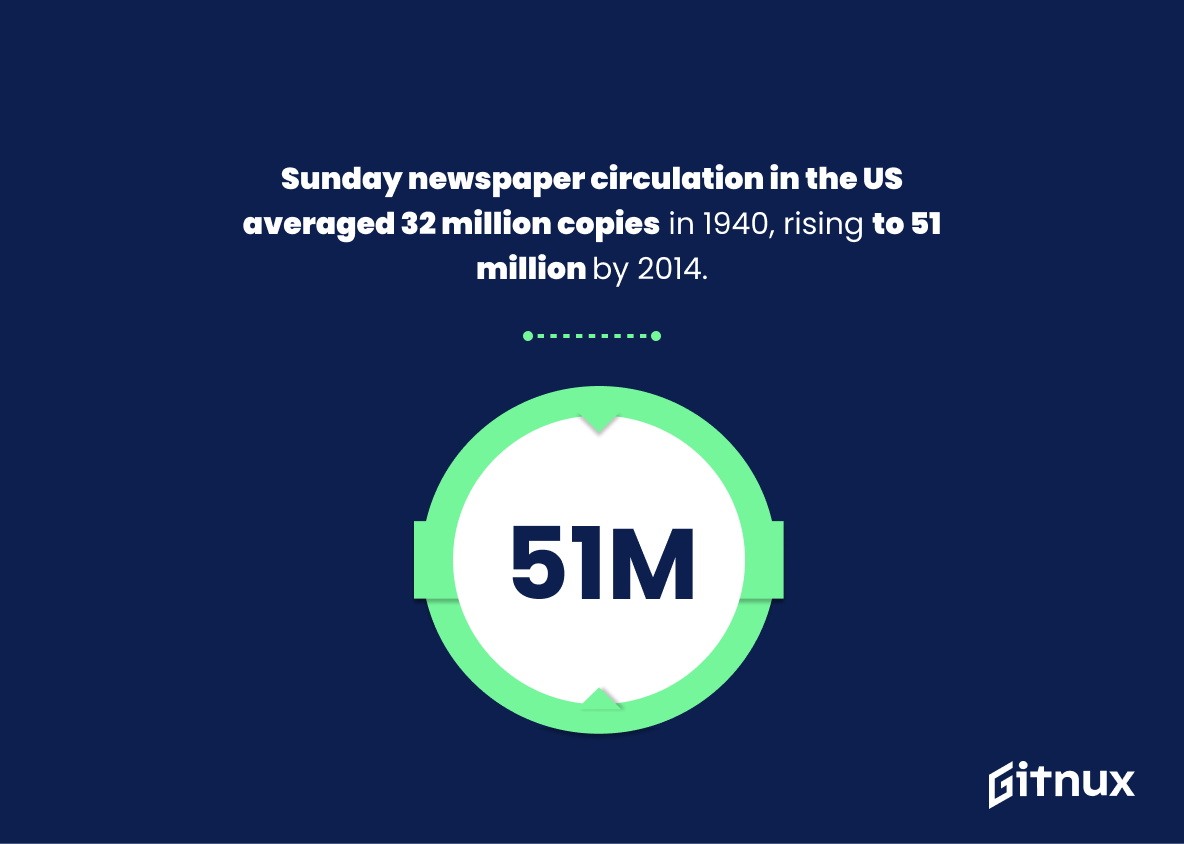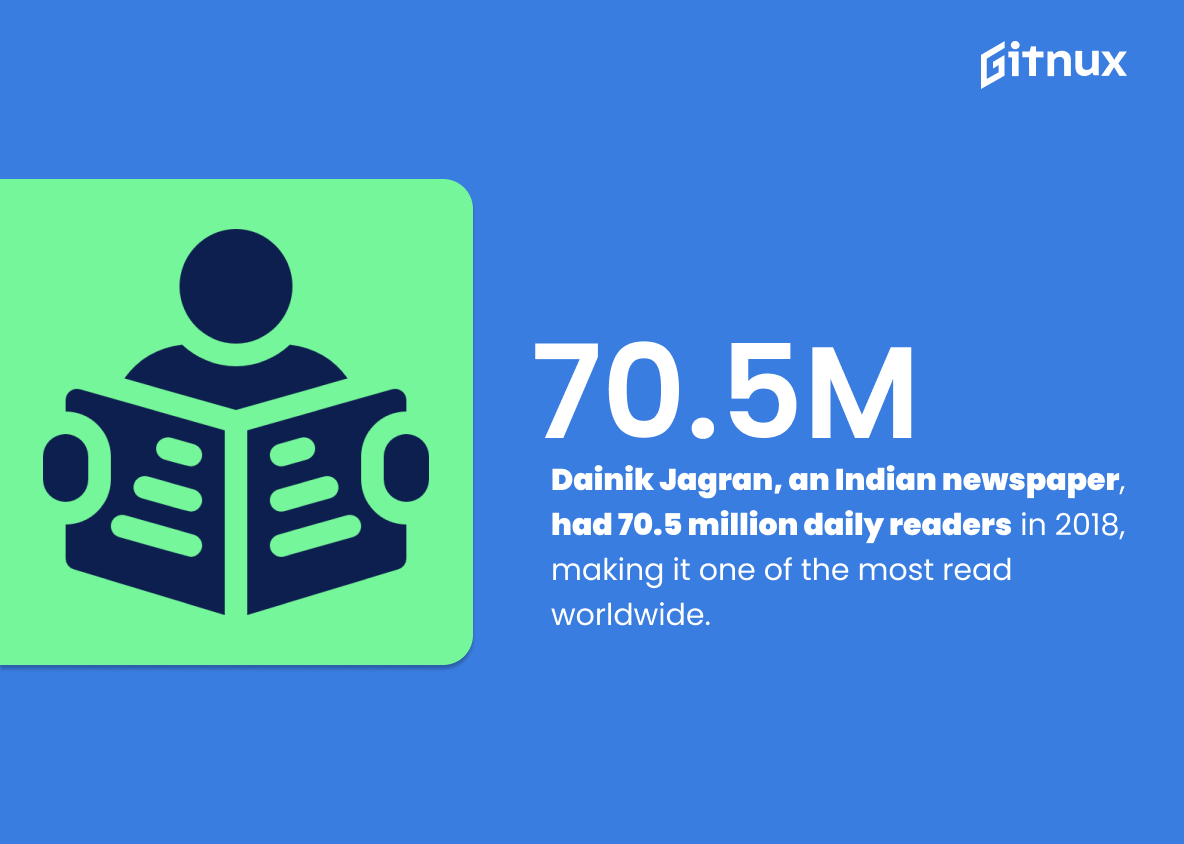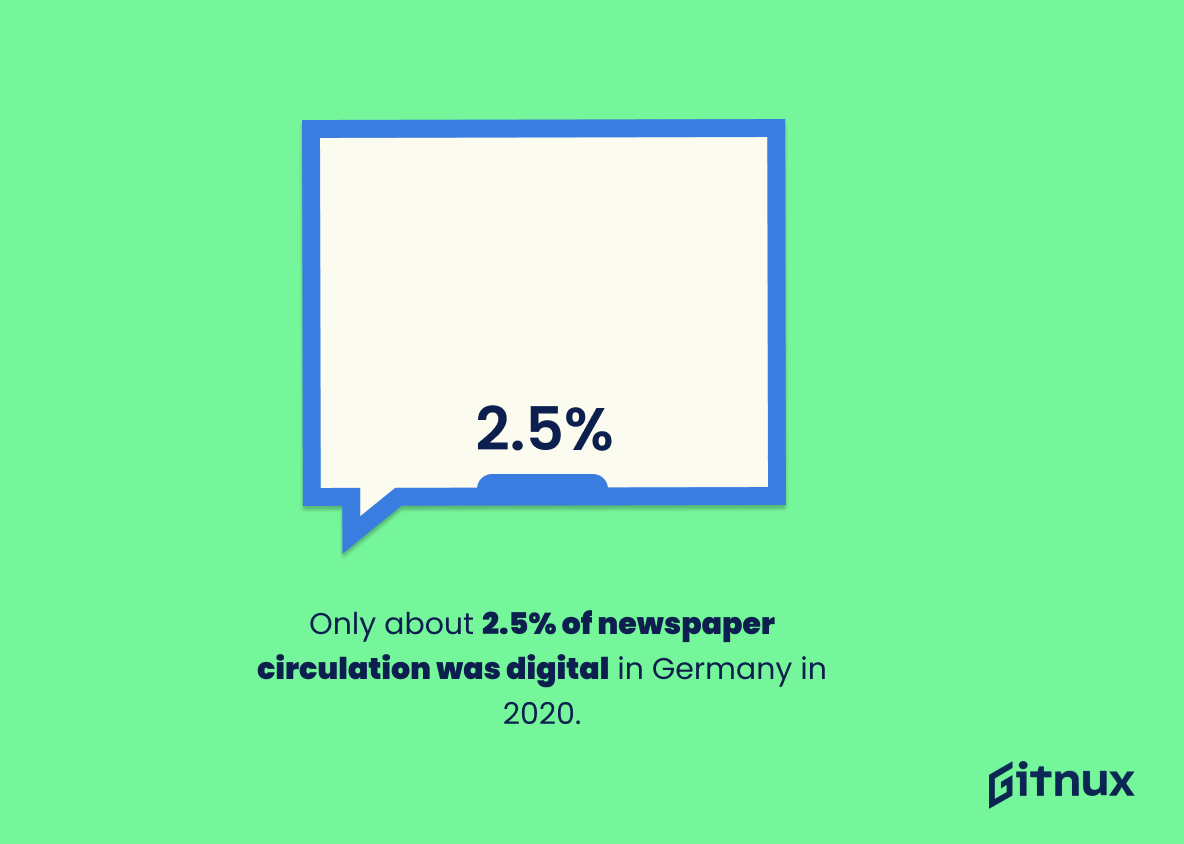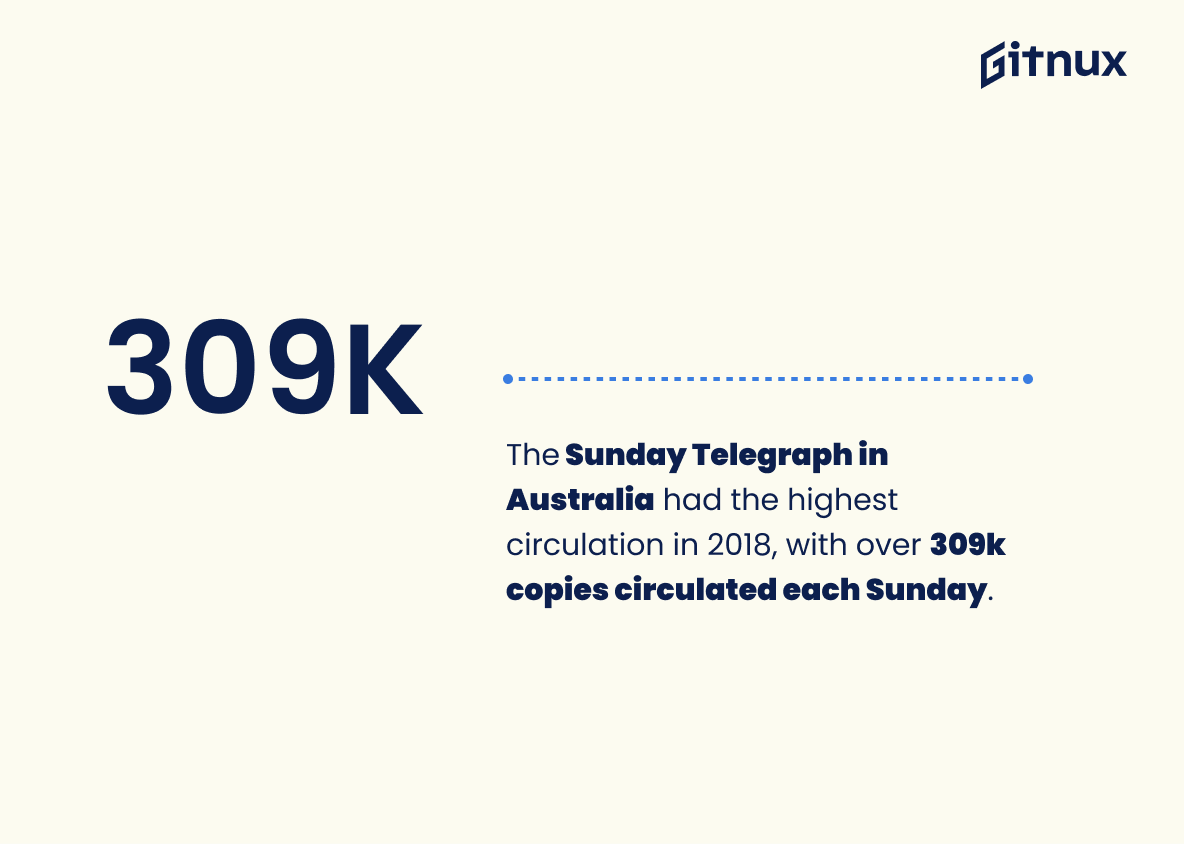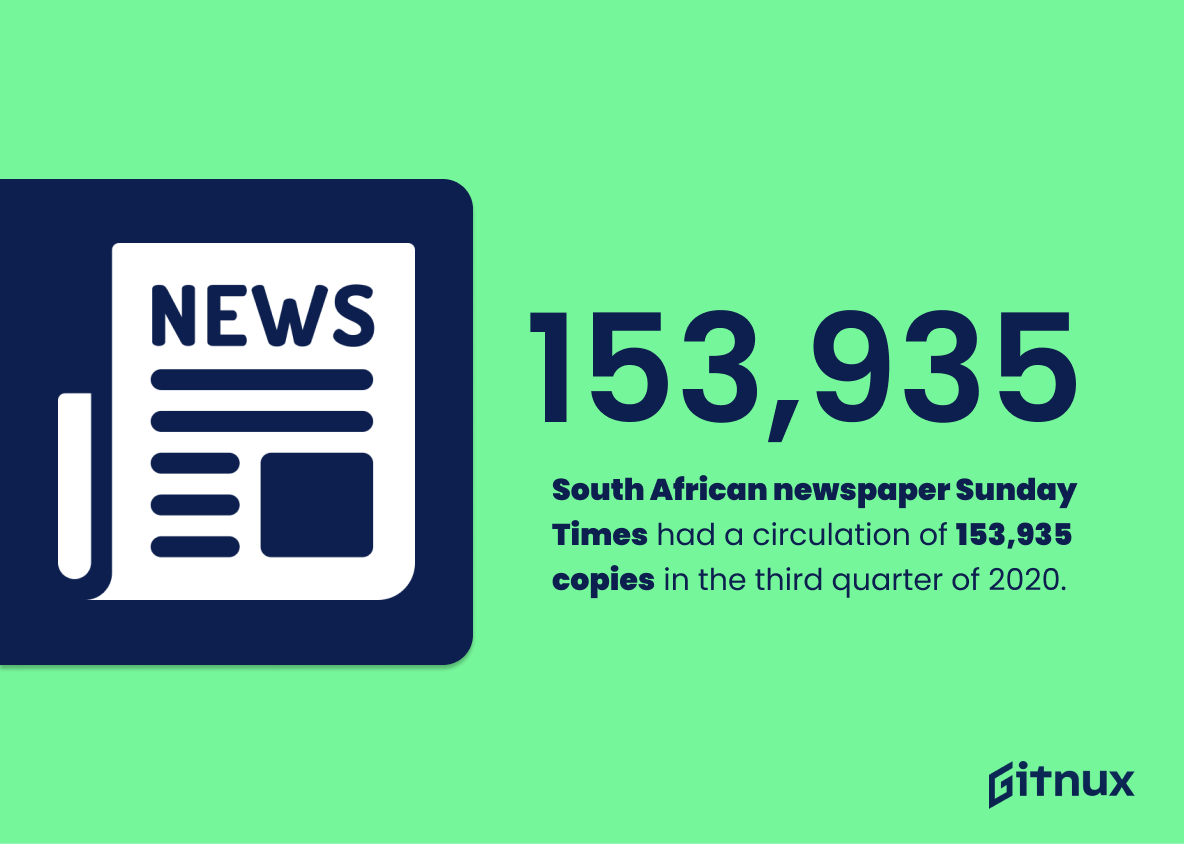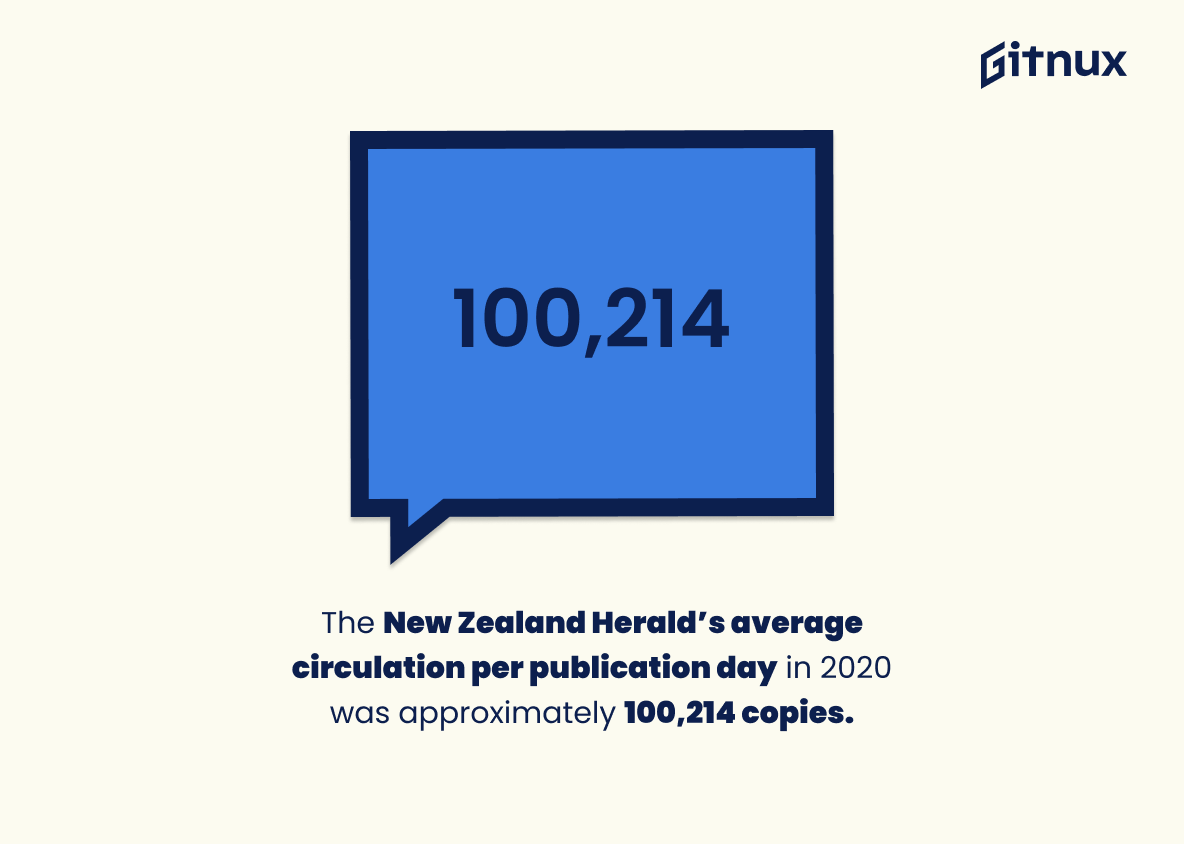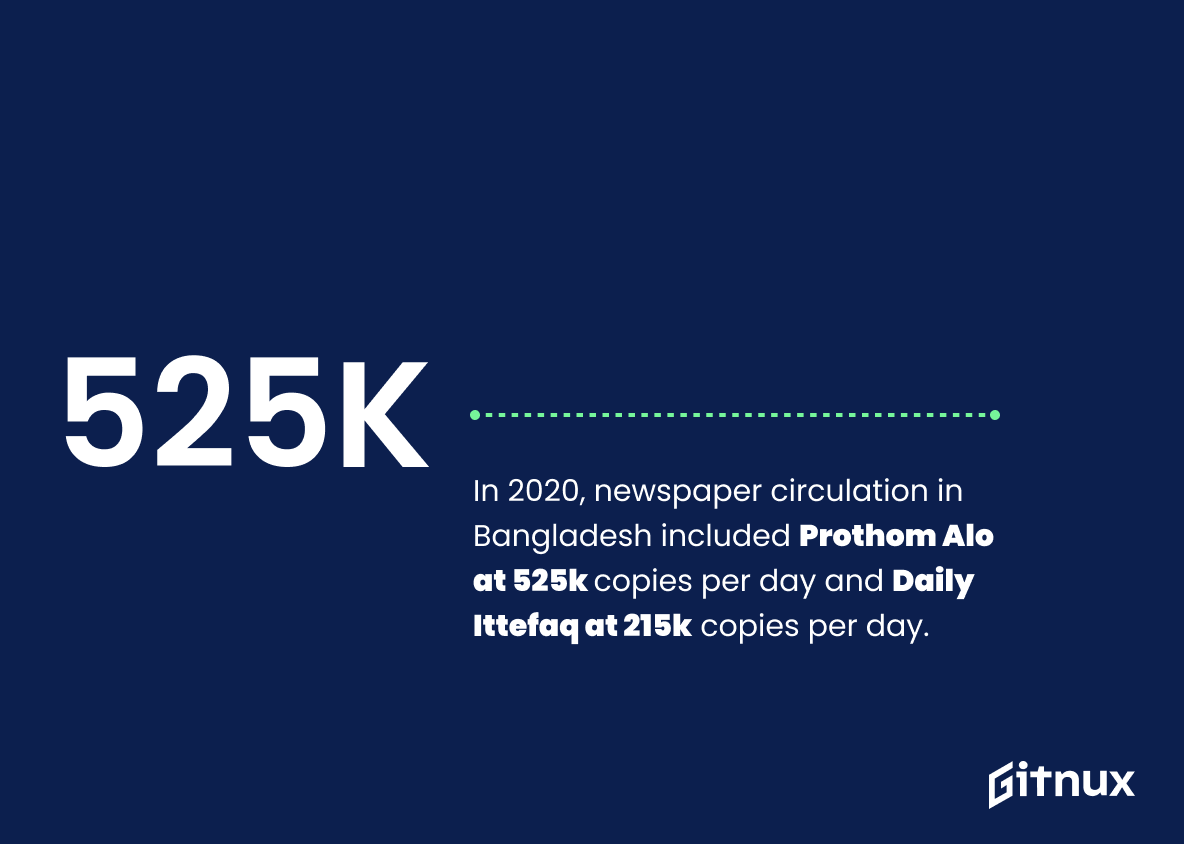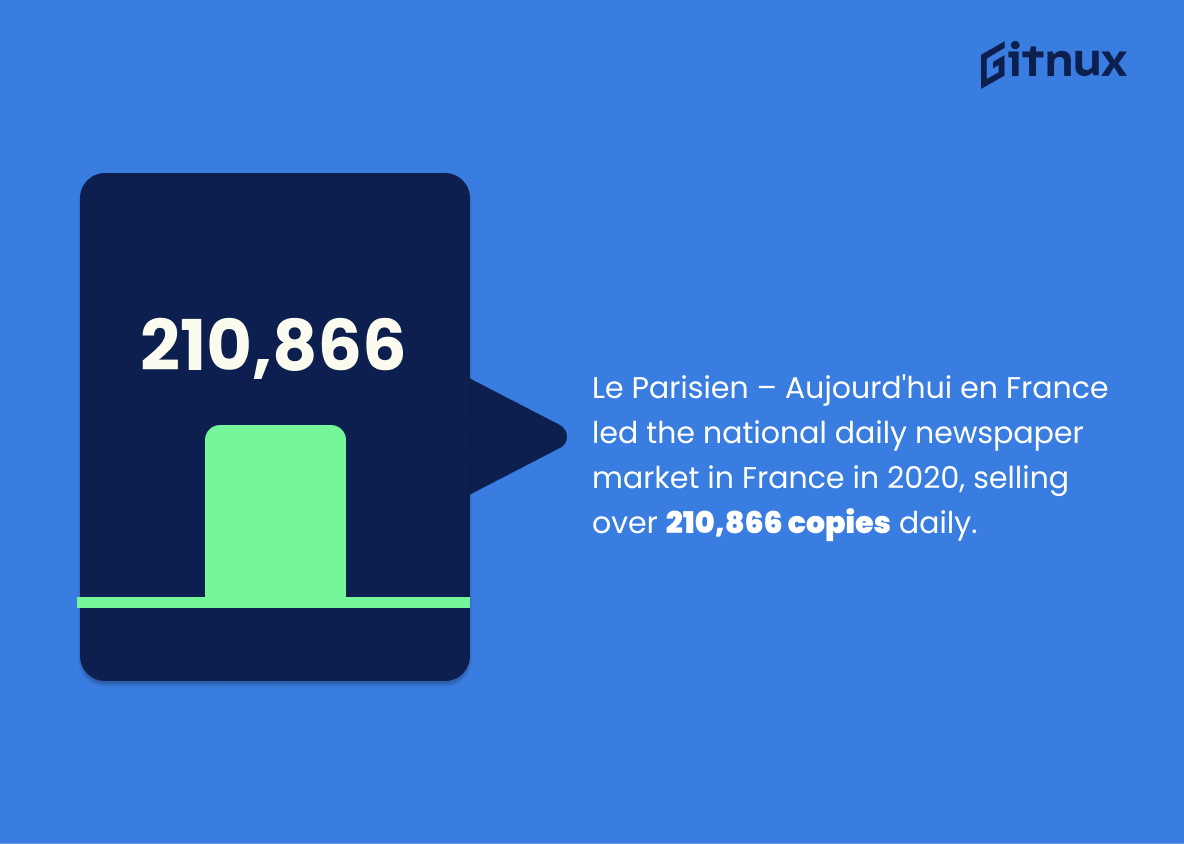Understanding the pulse of newspaper circulation statistics can provide intriguing insights into the ever-evolving dynamics of traditional media in the digital era. This blog post offers a comprehensive exploration of these statistics, unraveling aspects such as trends, market share, reader demographics, and impact of digital transformation. Drawing from reliable sources across the globe, we aim to provide a lucid, engrossing overview of the unseen forces shaping newspaper circulation. Whether you’re a student of journalism, a media professional, or simply a curious reader, this post offers a fascinating foray into the world of print media and its position in today’s diversified media landscape.
The Latest Newspaper Circulation Statistics Unveiled
In 2019, the New York Times had a daily circulation of about 443,000 hard copies.
The robust figure of 443,000 daily hard copies of the New York Times in 2019 serves as a compelling testament to the vitality of print media in the digital age. Against the backdrop of the growing popularity of online journalism, the persistence of a hearty daily circulation emphasizes the enduring appeal and influence of traditional newspapers. In the arena of newspaper circulation statistics, such a number underscores the unwavering loyalty of a substantial readership and the undiminished relevance of printed news for a sizeable segment of populace. It opens up a riveting conversation about the evolving nature of news consumption patterns and the dynamics of media markets.
In Japan, the highest circulated newspaper in 2019 was the Yomiuri Shimbun which circulated nearly 8.3 million copies.
Highlighting the circulation rate of Yomiuri Shimbun in Japan not only showcases the enduring demand for printed news in this digital age, but also provides a lens into the cultural fabric of Japan where traditional media formats continue to hold strong. It also underscores the global variance in news consumption trends, reinforcing that very different practices can exist even in technologically advanced societies. As such, the statistic of Yomiuri Shimbun’s 8.3 million circulation in 2019 gives depth and diversity to our understanding of newspaper circulation worldwide. It invites readers to consider how these figures reflect customer’s trust in traditional media and can serve as a challenging benchmark for websites or blogs who wish to reach a comparable readership.
British newspaper The Sun had an average daily print circulation of 1.26 million copies in 2020.
The eye-opening figure of The Sun’s impressive average daily print circulation of 1.26 million copies in 2020 undeniably magnifies its influence and reach in the British landscape. Within the realm of newspaper circulation statistics, this weighty number serves as a significant indicator, providing invaluable snapshots of the preeminence of this publication. It epitomizes a thriving perseverance despite the digital age’s notorious onslaught on print media and gives vital clues on readership, media influence, advertising metrics, and consumer behaviour trends. Unquestionably, it amplifies the need for a comprehensive understanding of these statistics when formulating media strategies, setting up advertising plans, or analyzing potential impacts in policy making. All in all, this exciting statistic paints a formidable picture of The Sun’s popularity, its ironclad place in UK’s media scene, and its cherished role in the hands and homes of millions of British citizens.
In the early 2000s, newspapers were more than twice as prevalent in US households as they were in 2017.
Witnessing the tides of change, this statistic vividly illustrates the steep downfall of newspapers in the era of digitalization. In a blog post about Newspaper Circulation Statistics, this statistic serves as a potent testament to the disrupted domain of traditional journalism. Allowing readers to compare the glory days of newsprint with its current situation, it emphasizes not just the shift towards digital news consumption, but also the dire need for print journalism to adapt and innovate for survival. Moreover, it encapsulates the transition of readers’ preferences, unveiling the generational shift in media consumption, while subtly radiating a melancholic charm of a bygone era.
In 1940, Sunday newspaper circulation in the US averaged 32 million copies; by 2014, it had risen to 51 million.
Drawing a comparison between the past and the present, these numbers create an intriguing narrative about the resilience and relevance of Sunday newspapers in the US. Despite the information age and the rise of digital media, the statistic demonstrates an unexpected growth in the circulation of Sunday newspapers. Advancing from 32 million in 1940 to 51 million in 2014, it is a testament to how these traditional print mediums have held their ground over time. This helps develop a broader understanding of consumer preferences and the enduring appeal of Sunday newspapers in an ever-changing media landscape. They serve as touchpoints to assess shifts in the dynamic relationship between print and digital media, providing valuable insights for the blog post on newspaper circulation statistics.
In 2018, India’s Dainik Jagran was one of the most read newspapers worldwide, with 70.5 million readers per day.
Highlighting the massive readership figure of India’s Dainik Jagran in 2018, which clocked in at a staggering 70.5 million readers per day, paints a vivid panorama of the newspaper’s profound reach and influence. These numbers reverberate powerfully in the realm of newspaper circulation statistics, significantly accentuating the undeniable sway of print media in certain geographies. Dainik Jagran’s towering numbers also underscore an interesting dichotomy – while there’s a global trend of steady decline in print media consumption, certain markets, such as India, retain a strong fidelity towards traditional newspapers. This invites further analysis and discussions around the factors contributing to this resilient appeal, a crucial angle for any comprehensive examination of newspaper circulation trends.
Only about 2.5% of newspaper circulation was digital in Germany in 2020.
Delving into the intriguing realm of newspaper circulation statistics, the data stating ‘only about 2.5% of newspaper circulation was digital in Germany in 2020’ offers a captivating snapshot of the digital climate in German media trends. This noteworthy piece of information portrays the slow but unyielding march of digital progress in the media sector even as it highlights the continued dominance of print media in the country.
In the context of a blog post about Newspaper Circulation Statistics, this dainty nugget of knowledge paints a broader picture, resonating with an interesting dichotomy; on one hand it underscores the persistent reliance on traditional newspapers, possibly pointing towards a demographic that values physical newspapers or is reluctant to transition into digital platforms. On the other hand, it also provides a baseline from which future growth can be gauged, sharpening our foresight into the gradual transition towards digital media in Germany.
In conclusion, this statistic is not merely a number, but a silent storyteller, narrating a tale of a nation’s media consumption pattern, its embrace of digital transformation, and intriguing hints of future developments.
In Australia, the Sunday Telegraph had the highest circulation, with more than 309,000 copies circulated each Sunday in 2018.
Diving into the vibrant world of Newspaper Circulation Statistics, one cannot overlook the stellar performance of Australia’s Sunday Telegraph. A behemoth in its own right, this publication bestowed its rich content upon more than 309,000 readers each Sunday in the culturally vibrant year of 2018. The significance of this number is nigh impossible to understate. It illustrates not only the substantial influence that this newspaper holds across Australia but also its ability to reliably connect with a large reader base each week. It further underscores the critical role such a prominent print medium plays in shaping public opinion and informing public discourse, a testament to the enduring power and relevance of print media in a digital age.
In 2020, the Washington Post had over 3 million digital-only subscribers.
Delving into the realm of Newspaper Circulation Statistics, the sheer size of the Washington Post’s digital-only subscriber base in 2020 illuminates a fascinating trend. Boasting over 3 million digital-only subscribers, the renowned news giant validates a digital shift in the newspaper landscape. It not only underscores a growing preference for digital content in an electronically-savvy era, but also exposes the dynamism and adaptability of traditional print mediums. This demographic metric showcases readers’ willingness to invest in digital news platforms, a vital touchstone for all parties interested in the interplay between the digitalization of media and user consumption patterns.
Malta’s The Sunday Times had a circulation of 27,500 copies in 2020.
The vitality of the indicated statistic – Malta’s The Sunday Times circulating 27,500 copies in 2020 – in the context of a blog post about Newspaper Circulation Statistics, lies in its ability to add substance and depth to the discussion. This nugget of information may represent a significant trend, changes, or developments in the print industry within a specific geographical context – in this case, Malta. This data point could be a potential mirror into the reading habits of the citizens, popularity of print media, business sustainability, or marketing strategies of newspapers in smaller nations. Therefore, this statistic isn’t merely a number, but a window into a richer, more nuanced narrative about global newspaper circulation in the modern world.
South African newspaper Sunday Times had a circulation of 153,935 copies in the third quarter of 2020.
Highlighting the circulation figures of the South African Sunday Times in your blog post offers compelling insight into the paper’s influence within the vast media landscape of South Africa. Illuminating the strength of this print media titan, the figure of 153,935 for the third quarter of 2020 underscores its endurance even in the digital age, while continuing to reach an extensive reader base. In any discussion on newspaper circulation statistics, these numbers serve as a robust benchmark for other newspapers in the region, representing the balancing act of maintaining tradition and keeping pace with evolving reader preferences.
The New Zealand Herald’s average circulation per publication day in 2020 was approximately 100,214 copies.
An exploration of the Newspaper Circulation Statistics would undoubtedly be incomplete without taking into account the case of The New Zealand Herald. The daily circulation of roughly 100,214 copies in 2020 does more than just tell us about the success of this particular newspaper. It represents a testament to the strength and staying power of print journalism in the digital age. This figure illuminates the continued demand for traditional news mediums in New Zealand and, likely, beyond. Furthermore, it provides a significant benchmark against which other newspapers around the globe can compare their daily circulation numbers. So, this particular statistic does not only define the compass of newspaper circulations in New Zealand – it also sketches wider trends in the media landscape.
Newspaper circulation in Bangladesh in 2020 included the Prothom Alo at 525,000 copies per day and the Daily Ittefaq at 215,000 copies per day.
In the pulsating world of news reporting, newspaper circulation figures offer a unique glimpse into the dynamics of media consumption, painting a broad picture of readers’ choices and interests. With the discussion revolving around newspaper circulation statistics, let’s take a detour into Bangladesh’s vibrant print media landscape. The Prothom Alo resonates with a robust daily circulation of 525,000 copies, making it a heavyweight contender in the industry. On the other hand, the Daily Ittefaq warrants attention with 215,000 copies in circulation per day.
By sharing these specific figures, we delve deeper into the pulse of Bangladesh’s newspaper readership. We introduce the titans of the industry, revealing not only their significant audience base, but also their potential influence in shaping public opinion. More than just numbers, these stats underscore the enduring relevance of print media amidst robust digital-era competition. By considering such distribution patterns, those interested in advertising, journalism, or political campaigning can better strategize their engagement with the public. An understanding of these numbers is akin to possessing a compass, offering a directional guidance in Bangladesh’s magnificent labyrinth of print media.
In France, Le Parisien – Aujourd’hui en France, was the leading national daily newspaper in 2020, with over 210,866 copies sold on average every day.
Delving into the world of Newspaper Circulation Statistics, the ascendancy of ‘Le Parisien – Aujourd’hui en France’ as France’s leading national daily newspaper in 2020 commands attention. With an impressive sale of over 210,866 copies just about every day, it’s not a mere passing fact. It draws a vivid picture of the mighty influence and audience command it holds in the French media landscape. Readers’ preferences, market dynamics and cultural norms converge at this number, making it a cornerstone for anyone seeking to understand the pulse of the French newspaper market. Moreover, it offers crucial insights for marketers targeting this lucrative media space and sets a benchmark for other newspapers vying for increase in readership and sales.
Conclusion
The changing landscape of media consumption has greatly impacted newspaper circulation. Modern advancements in technology have shifted readers from print publications to digital platforms. Despite this, newspapers continue to hold a certain gravitas and credibility that attract a dedicated audience. Understanding these newspaper circulation statistics is essential for both advertisers seeking the most effective platforms and publishers aiming to adapt to the evolving needs and habits of readers. Although it’s true that digital media is on a much steeper rise, the relevance and importance of newspaper circulation should not be undermined. We must continue to study these trends, invest in innovative strategies, and try to find a balance in this modern and traditional media dichotomy.
References
0. – https://www.www.statista.com
1. – https://www.www.businessinsider.com
2. – https://www.www.nzherald.co.nz
3. – https://www.www.warc.com
4. – https://www.www.dhakatribune.com
5. – https://www.www.roymorgan.com
6. – https://www.www.journalism.org
7. – https://www.timesofmalta.com
8. – https://www.www.bostonglobe.com
9. – https://www.www.poynter.org
10. – https://www.www.thesouthafrican.com
